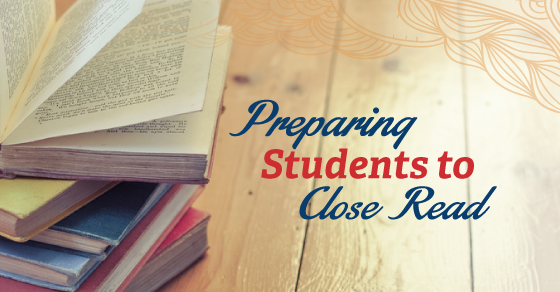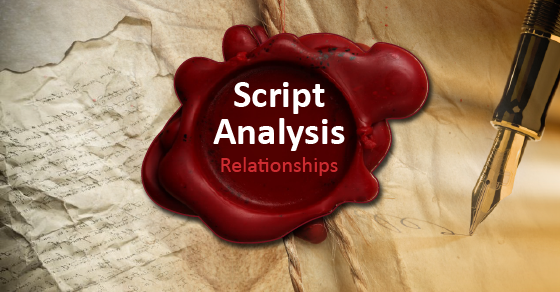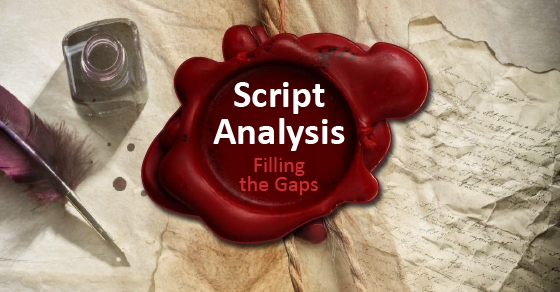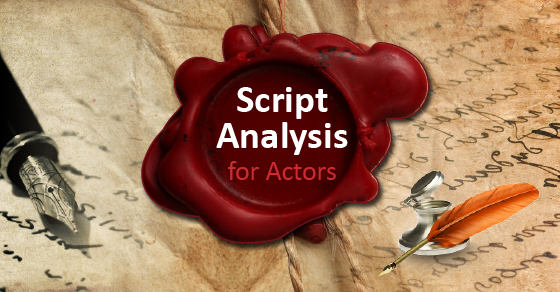Preparing Drama Students to Close Read
or, “Dipping the Toe Before Diving in the Deep End”
Do you use close reading in the drama classroom?
Close Reading is an analysis tool. Students read a text multiple times for in-depth comprehension, striving to understand not only what is being said but how it’s being said and why. Close reading takes a student from story and character to drawing conclusions on author intention. Close reading prompts students to flex their thinking skills:
- It teaches students to engage with a text. With each particular read, students have to annotate/make notes.
- It teaches students to be selective. We can’t highlight everything in the text, only the most important elements.
- It teaches students to make educated decisions. All conclusions and opinions have to be backed up with a text example.
Why should you use close reading in the drama classroom?
The act of close reading fits hand in hand with script analysis. You want your students to get in the habit of reading scenes and monologues multiple times. You want your students to focus on different aspects of a text – it’s not just about the content, it’s about sentence structure and punctuation. Structure analysis is a helpful tool for character development. Close reading is a text dependent exercise – you don’t use research to support an answer, you use the text. When student actors and directors make decisions about their character or their vision, we want them to support their decisions with examples from their script.
How do I prepare my students to close read?
Before you even bring a single text into the classroom, use these exercises to prepare your students for the process.
The Reader
Find out what your students think about the act of reading and then dramatize it.
1. Ask your students: What do you like about reading? What do you hate about reading? How do you feel when you read? How do you feel when you get to the end of a book – satisfied? Frustrated? This can be an oral discussion or written in their journals.
2. Next, students create a character based on their thoughts and feelings about the act of reading. If they personify their thoughts and feelings about reading, what kind of character comes to light? Are they human, animal, monster or alien? What is this character’s primary emotion – to make people feel good about reading or to humiliate? What powers does this character have? How do they move and speak? Do they live alone or do they have a big family?
3. Divide students into groups. They are going to create a scene in which each student will play their Reading Character. So if they’ve created a character who is a blob and speaks in clicks and whirs, that’s what they have to do in the scene. Emphasize that they’ll have to find a way to communicate. The group is going to dramatize a party, meeting or event where all of the different reading characters would be in the same room. Decide on a purpose for coming together. Decide how they would react to each other. Do the monsters get together and bully the others? Do the positive reading characters just treat everything positively? The length of each scene is one minute.
4. Discuss with students afterward – what was it like to see reading as a character or to be their reading character? If they have a negative relationship with reading, what can they do to change that? If they don’t want to change, ask why.
Physicalize Annotation
Part of the close reading process is to annotate and make notes about what you’re reading. When you’re reading a text multiple times, it’s easy to forget your thoughts from one read to the next. Students need a system to identify the what, the how and the why. Click below for a PDF version of this exercise that includes a annotation handout. The handout suggests four marks students can use when annotating a text.
Then try this exercise.
1. Divide students into pairs. Give each pair the Annotation Handout. As a pair, they’re going to annotate a monologue together. I’ve included one to use.
2. Each pair will read the monologue three times (focusing on the what, the how and the why) and with each read annotate accordingly, using the Handout as a guide.
3. Next, each pair will prepare the monologue to present. Partner A will read the monologue dynamically: they have to bring a character to the read, they have to be emotionally and vocally present. At the same time, Partner B will physicalize their annotations as follows:
- Underlined text – Partner B lies on the ground in front of Partner A.
- Starred text – Partner B presents “jazz hands” behind Partner A.
- Questions – Partner B stands beside Partner A and use their shoulders, arms, and hands to shrug in a questioning fashion.
- Brackets – Partner B stands behind Partner A and puts their arms around Partner A in an open hug. (Physicalized brackets)
Will this look silly? Absolutely. That’s ok. Take any chance you can to have a little fun with this technique.
The purpose behind this exercise is to show students what it looks like when a passage is over annotated. If one group has Partner B running from lying on the floor to jazz hands to brackets and back again – this shows you and the class that the pair wasn’t being selective or specific in their annotation choices.
Start Small
When you begin the close reading process, take baby steps. Start small. Use the process with the title of a play. (Death of A Salesman). Use a single line from the first scene. Find a production photo from the play and analyze it:
- What is happening: What details can you see in the photo? What are the relationships?
- How is it happening: How has the director blocked the moment? Is there a power struggle? Who has the higher status? How are lighting, set and costuming used?
- Why is it happening: Why has the director chosen to present the scene in this way? What conclusions can you draw about the play by what you see in the picture?
Close reading is a dense, focused process. It can also take your students’ script analysis skills to the next level.



